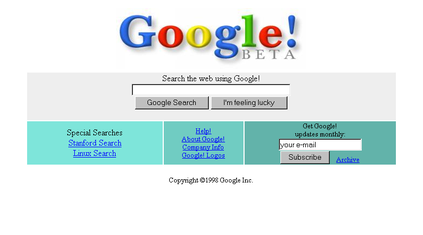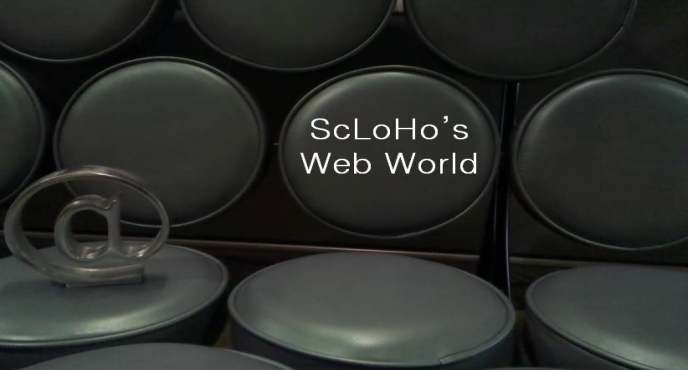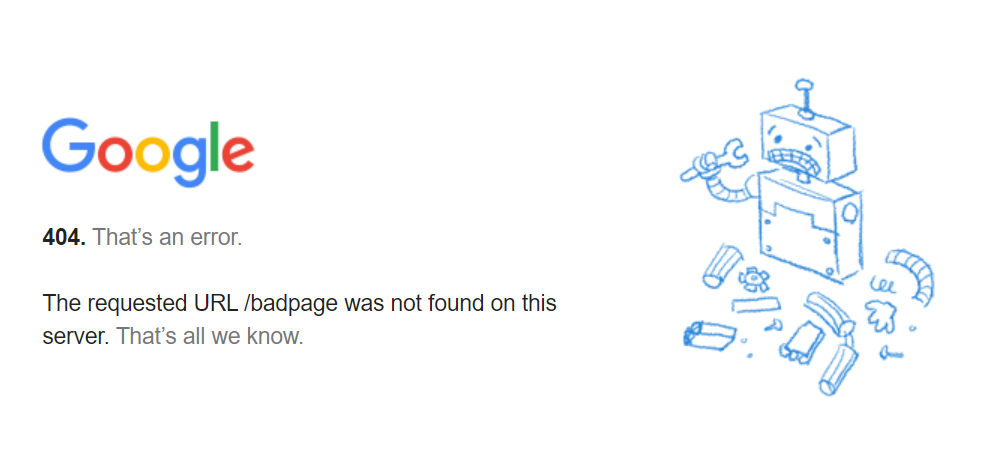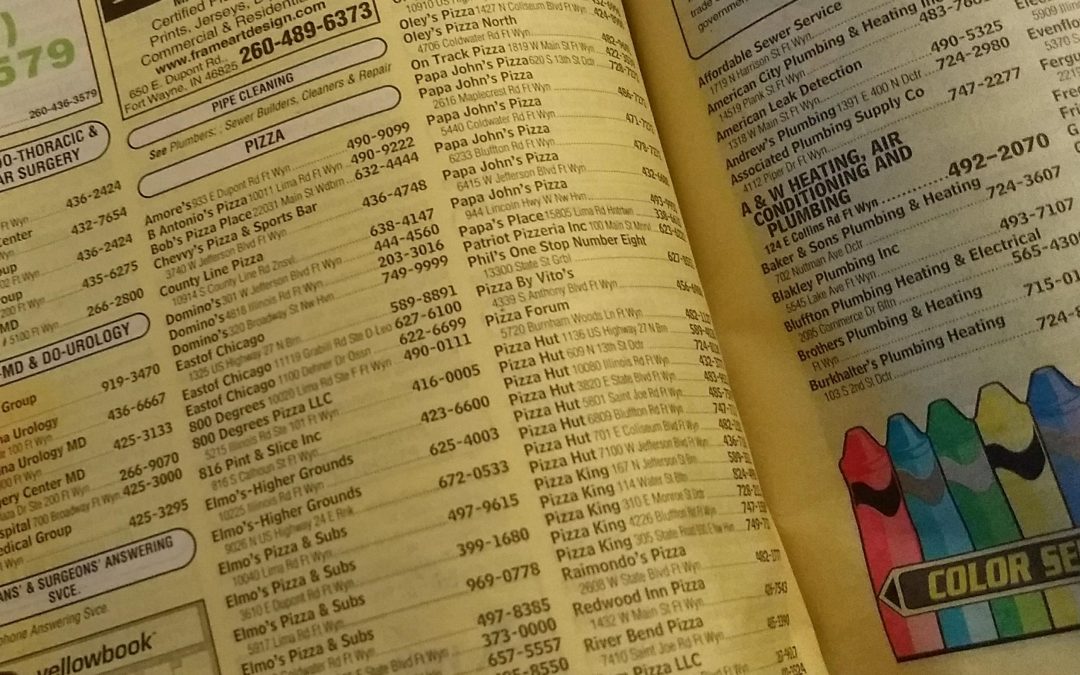
by Scott Howard | Jun 14, 2018 | Marketing and Advertising Insights, ScLoHo's Fort Wayne, The Not-So-Secret Writings of ScLoHo, Uncategorized, WOWO Fort Wayne Radio Advertising with Scott Howard
I offer both radio advertising services with WOWO radio in Fort Wayne, Indiana and digital marketing services via our Federated Digital Solutions division. But today, I’m going to break the hearts of my digital marketing friends with the declaration that: Radio Advertising is the Real SEO!
Every week I have someone tell me that they want to increase their Google rank, which means that they want to be at the top of the Search Engine Results Page when someone Googles their business category.
While that may be a worthy goal, I’m here to tell you, it’s kind of a stupid goal. I’ve been around the advertising world to remember when the printed yellow pages were still being used by consumers.
The Yellow Pages was what our parents and grandparents would use to find a phone number for a business before the internet made it obsolete. This annual publication would list businesses that bought ads in each category and in alphabetical order.
For example let’s say you want to order a pizza.

This is a real pizza from Acme’s FB page
If you don’t have the phone number memorized, ah yes, we used to memorize phone numbers, now I don’t even know my kids phone numbers. Anyway, if you wanted a pizza you got out the phone book and if you were not sure which pizza place to call, you’d look in the Yellow Pages under the category Pizza. That’s where all the pizza joints would be listed in alphabetical order, at least the ones that bought an ad in the phone book.
It was better to be named Acme Pizza than Zoli’s Pizza because Acme was in the front of the listings. Sort of like looking up Pizza on Google, Acme would automatically rank number one on page one . That is until someone opened up Ace Pizza. Because alphabetically Ace Pizza comes before Acme Pizza.
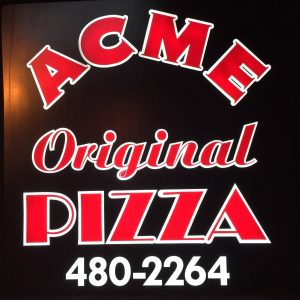
I’ve had pizza from the Acme
That’s how our parents would find the number or address to all kinds of places, the phone book, because they didn’t have the internet.
But you know what was even better than being found in the Yellow Pages with all the other Pizza shops?
Having your customers remember your pizza place so they could look in the white pages instead of the yellow pages. The white pages of the phone book listed everyone in alphabetical order instead of by business category. If my parents wanted a pizza from Zoli’s pizzeria, all they had to do was open the white pages of the phone book, flip to the Z’s and find Zoli’s.
How did businesses like Zoli’s become well known so that people would look for the number for Zoli’s Pizza and not any other pizza place? They developed Top Of Mind Awareness. Their customers knew that Zoli’s was where they wanted to order their pizza from and they did.
This Top Of Mind Awareness is a Human Relationship Principle that I talked about recently. We develop preferences and those preferences are on our short list of consideration. So when someone says, “let’s get a pizza!” we don’t have to wonder, “who can sell me a pizza? and start searching the yellow pages, or to move this scenario up to today, we don’t Google “Pizza”, we Google “Zoli’s”.
Top Of Mind Awareness can help set a business apart when we look online in other ways too.
Because sometimes we do Google “Pizza” and Google gives us about 10 results on the first page of results. Let’s say Zoli’s is on that first page, but they are number 7 and the first 6 listings are for places we either don’t like, have never had, or never heard of before. Top Of Mind Awareness will motivate us to call skip past those first 6 pizza joints and call Zoli’s because just like in the old phone book days, we know we are going to like a Zoli’s Pizza.
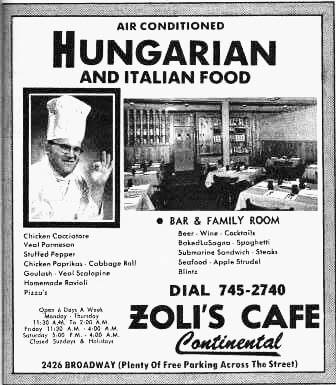
A very old ad for Zoli’s
So back to that statement, Radio Advertising is the Real SEO? How does that work? Radio ads can create Top Of Mind Awareness. Even when we are not thinking about pizza, when the radio station plays an ad for Zoli’s Pizza, we hear it and it reinforces the idea in our head, hearts and stomachs that the next time I want pizza, it’s going to be a Zoli’s Pizza.
I’m going to use a real life example, hamburgers. McDonald’s is the most recognized hamburger brand around the world because they continually advertise to keep that Top Of Mind Awareness going. You can buy a better burger and spend more money than McDonald’s, heck you may never eat at McDonald’s but they certainly have Top Of Mind Awareness, right?
15 years ago when businesses were jumping on the “I gotta have a website for my business” bandwagon, I helped several companies be found online by promoting their website in their radio ads. We still do it. Because it works.
When a business owner tells me that he gets all his customers from Google, we dig a little deeper and discover if they actually had Top Of Mind Awareness when his customers went online or are they just one in a thousand in the search results.
I can help you become the preferred choice for your customers, want my help? Let’s talk.
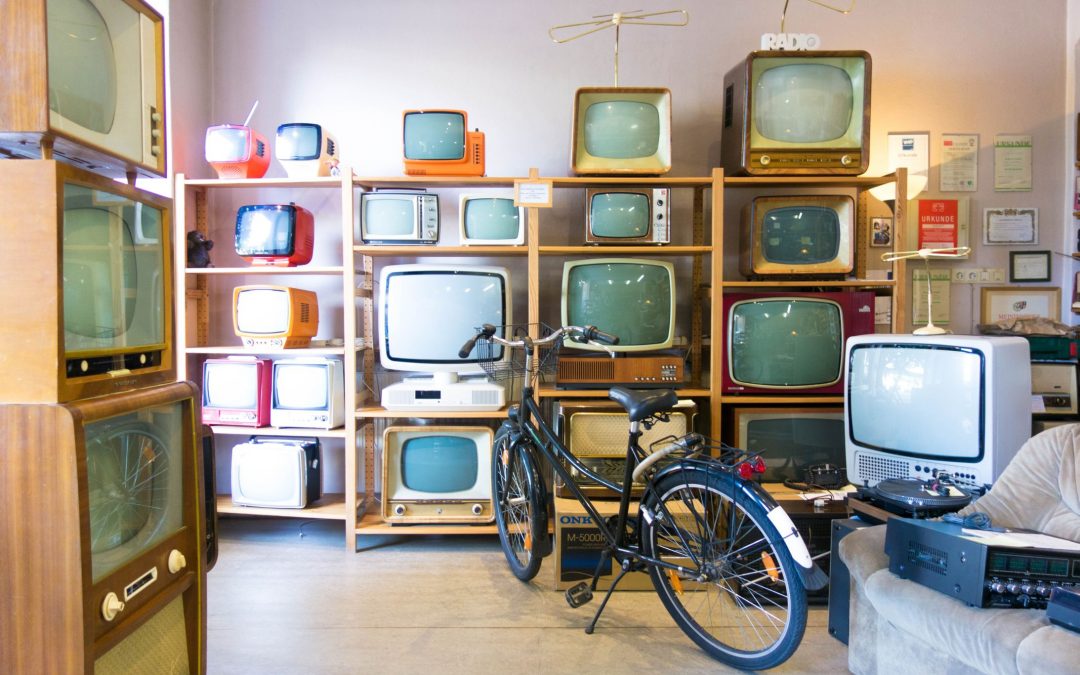
by Scott Howard | May 24, 2018 | Marketing and Advertising Insights, ScLoHo's Collective Wisdom, The Not-So-Secret Writings of ScLoHo, Uncategorized, WOWO Fort Wayne Radio Advertising with Scott Howard
As we head into the unofficial summer season of June, July and August, the three months between Memorial Day and Labor Day, I want to address a headline I saw again and give you an insiders perspective on The Decline of Mass Media.
Why talk about it now? Well, television viewing habits in years past were different during summer time, with the major networks showing summer reruns instead of new episodes. But hang on because I’m getting ahead of myself.
What is mass media anyway? Perhaps traditional media is a better term. Television, Radio, Newspapers and Magazines are the traditional media that have been the mainstay since the 1950’s and before.
Newspapers are continuing to struggle. Lay offs and shut downs have been occurring for nearly two decades, due to the rise of the internet. One story I read this month blamed the owners for cutting staffs.
The Denver Post cut the newsroom from 184 journalists to 99, according to the story. Other cuts at other newspapers were also harsh. 73 reporters down to 10 while another paper went 45 to 12 journalists. Locally in Fort Wayne, the afternoon paper ceased publication, and instead gets one sheet in the morning paper and an online edition. I saw friends of mine in the newspaper business in town leave either on their own or due to cutbacks. I was once tempted about 8 years ago to work for their online division but am grateful I stayed put.
The company I work, Federated Media sold the one newspaper they owned a couple years ago because it was nearly impossible to be profitable.
When I say the internet is the reason for the decline in print, it’s really a combination of things related to the internet.
Accessibility for one. 20 years ago most of us owned a desktop computer with a dial-up modem at home, if we had a home computer. 12 years ago laptops took over as the primary personal computer device. And did you realize that the first iPhone debuted in 2007, ushering in the smartphone revolution?
Online Content is the other contributing factor. No need to wait for the morning paper to check the weather or the score. Newspapers have tried to replace their dwindling subscriber numbers with paywall subscriptions, but the math doesn’t work. If you don’t have the readers, the advertisers will also go away and the decline has been going on for too long.
Declines in the magazine publishing industry are similar. What seems to have survived in print is specialized publications. Smaller but targeted readership than mass media.
Another way the internet has changed the media is the television industry. The New York Times featured a story that I read online about the future of broadcasting: Why Traditional TV Is in Trouble.
Here’s a few quotes:
Ratings are on the decline, especially among young people, some of whom don’t even own televisions. It’s hard to keep up with the many devices and apps people now use to watch shows. And there is a host of material from Silicon Valley that is competing for viewers’ attention, including Google’s YouTube, Facebook and Netflix. It all adds up to a precarious situation for broadcast TV.
Advertising on TV has long been the best way for marketers to reach a large number of people at one time. And it is still a formidable medium. But cracks are showing.
and:
The hottest shows on TV networks — which command the highest ad prices — are attracting older viewers, which is a challenge for brands that want to reach millennials and teens. For instance, this season’s top-rated show, the revival of “Roseanne,” has a median viewer age of 52.9 years. The network show with the lowest median age is “Riverdale” on the CW, at 37.2.
The TV networks will be able to survive by reinventing themselves much like radio stations did when television became a media force last century. But the local TV stations? My advice if you want to reach anyone younger than Baby Boomers, good luck. All of my kids are in their 30’s and none of them are watching broadcast TV, some don’t even own a television. They get their video content online. Even my wife and I watch just as much video content on something other than a TV or if we do, often it’s days later and the local ads are not even seen.

So what is taking the place of traditional broadcast TV as a mass media?
Netflix, Amazon Prime Video, YouTube, to name a few. Alternatives to cable like Sling, Hulu and Roku. These are all offering the best of both worlds for advertisers. You get to reach people watching video content but you get to target your ads to specific audiences, one of the technical marvels of the internet.
Here’s a quote from a newsletter I received from Google:
More than half of 18 to 49-year-olds in the U.S. either don’t watch a lot of TV or do not subscribe to TV. But that doesn’t mean TV content and TV screens are on their way out. In fact, the TV screen is the fastest growing screen for YouTube content, with 70% growth in the last two years.
Let me address the radio broadcasting industry too. It was the first broadcast mass media and WOWO radio, the station I work for is over 90 years old. There are two categories of traditional broadcast radio stations these days, and I’m not talking about AM and FM. The two categories I am referring to are talk based programming and music based programming.
Radio broadcasting started out with network radio shows from NBC, CBS, ABC and the Mutual Broadcasting System and eventually they evolved to what we have today.
In Fort Wayne, Indiana, there are 37 radio stations within close listening range. Some are duplicates of the same programming on different signals, like WOWO 1190 AM is the same as WOWO 107.5 FM, so let’s say there are 25 separate and individual choices. This is also a way of targeting your advertising. The best local radio stations keep an emphasis on local content, stuff you can’t get by listening to Spotify or Pandora.
Federated Media has 6 stations in Fort Wayne, four are music based, two are talk. I work for the talk stations, WOWO and our ESPN affiliated station. Both offer a combination of local and national programs. There are specific characteristics of WOWO listeners that help me determine if advertising on WOWO would be a good idea. Want to reach grown-ups? Let’s talk. Want to reach teenagers? I’ll connect you with someone who works for one of our music stations.
Not all radio stations and radio broadcasting companies are the same. Overall radio listenership has remained pretty steady for the past decade. Over 90% of everyone age 12 and older listens every week. However smart radio stations and companies are staying ahead of the trends that we see going on around us.
For years, radio stations like WOWO offered a way for you to listen via the internet. Go to WOWO.com and click on the listen now tab and you can stream WOWO on your computer. There are plenty of apps that offer access to radio stations like WOWO, and some people listen to WOWO via the WOWO app itself.
2018 however is the break thru year for Alexa and Google Home smart speaker systems. We are seeing a resurgence in radio listening simply by telling the smart speakers to play WOWO and poof, there’s Pat Miller in the afternoon or Charly Butcher in the morning, in your kitchen, just like 40 years ago when I was a kid and my parents had clock radios in their house.
One last way radio stations like WOWO are staying on top of the trends is podcasting. WOWO and our other Federated Media stations share both content from our live shows online in podcast form, but also we have some podcast only shows that are available via iTunes or what ever your favorite podcasting player is. Podcasting is huge and we can connect businesses to podcast listeners too.
The title of this today was The Decline Of Mass Media. As I’ve laid out what’s going on in print and broadcasting in response to the web connected world we live in, I hope you see as I do, these are exciting times. The traditional mass medias that are adapting are going to done fine while the others struggle and will be a mere shadow of their former selves.
Fortunately, I get to work with a company that continues to be on the leading edge and I get to offer advertising and marketing solutions that work using WOWO radio and our digital marketing division of Federated Media.
Want to see how I can help your business grow this year and next? Contact me.
One final piece that I’m going to share because it was posted on LinkedIn by Ben Saurer, WOWO radio’s General Sales Manager that demonstrates how WOWO truly is a leader. Ben’s job is to hire, coach and lead an advertising sales team. Quite frankly, most media companies struggle with this, but as you will see, WOWO is different, in a good way. Here’s what an excerpt from what Ben wrote:
All my people earn above the industry average. Client retention is high. Everyone on my staff is generating more revenue than last year. We’ve had ZERO sales staff turnover in 2+ years while having our market’s largest sales staff. People perform and like working here.
Remember the story I shared about the newspapers cutting their staffs to try and save themselves from going under? Completely different story here at WOWO.
